What is tube tied procedure. Tubal Ligation: A Comprehensive Guide to Female Sterilization
What is tubal ligation. How is the procedure performed. What are the types of tubal ligation. What are the risks and side effects. How long does recovery take. Why do women choose this procedure. Is tubal ligation reversible.
Understanding Tubal Ligation: The Permanent Birth Control Solution
Tubal ligation, often referred to as “having your tubes tied” or “tubal sterilization,” is a permanent form of birth control for women. This surgical procedure effectively prevents pregnancy by blocking the fallopian tubes, thus preventing the egg from meeting the sperm. It’s important to note that while tubal ligation is highly effective at preventing pregnancy, it does not protect against sexually transmitted infections (STIs).
Approximately 700,000 tubal ligation procedures are performed annually in the United States, making it a common choice for women who have decided they no longer wish to have children. The procedure is typically covered by health insurance, making it an accessible option for many women.

How Does Tubal Ligation Work?
During a normal menstrual cycle, an egg travels from the ovary through the fallopian tube. If unprotected sexual intercourse occurs, sperm can travel up the fallopian tube, potentially leading to fertilization. Tubal ligation prevents this process by interrupting the pathway in the fallopian tubes.
During the procedure, an OB/GYN surgeon either cuts, clips, burns, or completely removes sections of the fallopian tubes. This intervention prevents sperm from reaching the egg and the egg from traveling down to the uterus. It’s worth noting that women who undergo tubal ligation continue to have regular menstrual periods, as the procedure does not affect hormone production or ovulation.
Types of Tubal Ligation Procedures: Exploring Your Options
There are several methods of performing tubal ligation, each with its own unique approach to blocking the fallopian tubes. Understanding these options can help you make an informed decision with your healthcare provider.
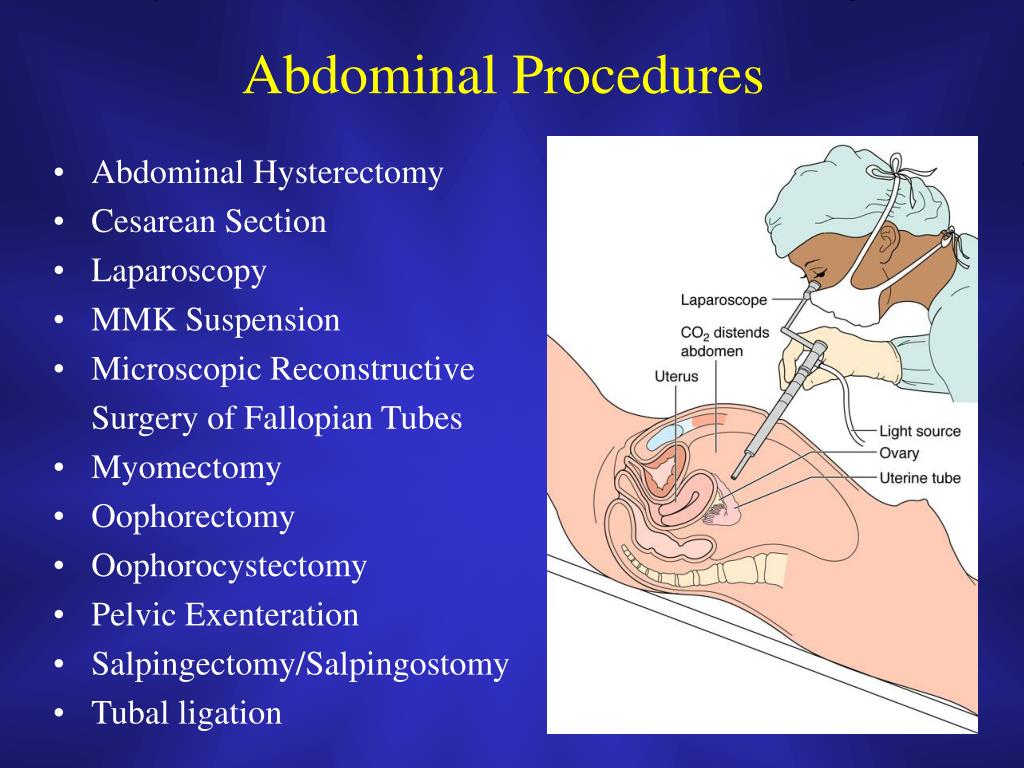
- Bipolar Coagulation: This method uses an electrical current to cauterize sections of the fallopian tubes, typically 2-3 centimeters in length.
- Fimbriectomy: In this procedure, the portion of the fallopian tube closest to the ovary is cut and removed.
- Monopolar Coagulation: Similar to bipolar coagulation, this technique uses electric current to cauterize the fallopian tubes together and then further damage the remainder of the tubes.
- Tubal Ring: The fallopian tubes are doubled over, and a silicone band is placed over the doubled portion.
- Irving Procedure: Two sutures are placed on the fallopian tubes, and the section between them is removed. The ends of the tubes are then attached to the back of the uterus and connective tissues.
- Tubal Clip: Similar to the tubal ring method, a permanent clip is applied and fastened to the doubled portion of the fallopian tubes.
- Pomeroy Tubal Ligation: A portion of the tube is doubled up, and a suture is placed in the tubes. The ends are then cauterized with an electrical current.
The Tubal Ligation Procedure: What to Expect
Tubal ligation is typically performed as an outpatient procedure, meaning you can usually go home the same day. However, it can also be done immediately following a cesarean section or after childbirth. Here’s what you can expect during the procedure:

- You will be placed under anesthesia to ensure you don’t experience any pain during the surgery.
- An anesthesiologist will monitor your condition throughout the procedure.
- For laparoscopic tubal ligation, a small amount of gas is inserted to inflate your abdomen, creating space for the surgeon to work.
- A laparoscope (a thin tube with a camera) is inserted through a small incision in your abdomen.
- One or two additional small incisions may be made to insert other surgical instruments.
- The surgeon will then perform the chosen method of tubal ligation.
- Once complete, the gas will be removed, and you’ll be awakened from anesthesia.
Most women who undergo tubal ligation as an outpatient procedure can return home within a few hours. If the procedure is performed following childbirth or a C-section, you’ll recover in the hospital, but no additional hospital time is typically required beyond what’s normal for childbirth.
Reasons for Choosing Tubal Ligation: Is It Right for You?
Women choose tubal ligation for various personal reasons. It’s a significant decision that requires careful consideration. Some common reasons include:

- Desire for permanent contraception without ongoing birth control management
- Completion of family planning goals
- Health risks associated with pregnancy
- Desire to avoid passing on genetic conditions
- Preference for non-hormonal birth control methods
- Certainty about not wanting future pregnancies
It’s crucial to remember that tubal ligation is considered a permanent form of birth control. While reversal procedures exist, they are complex, not always successful, and often not covered by insurance. Therefore, it’s essential to be confident in your decision before proceeding with tubal ligation.
Potential Risks and Side Effects of Tubal Ligation
While tubal ligation is generally a safe and effective procedure, like any surgery, it carries some risks. It’s important to discuss these potential complications with your healthcare provider before deciding to undergo the procedure.
Effectiveness and Pregnancy Risks
Tubal ligation is highly effective, but it’s not 100% foolproof. Fewer than 1 out of every 100 women may become pregnant after the procedure. Younger women tend to have a slightly higher risk of the procedure failing compared to older women.

In the rare event of pregnancy after tubal ligation, there’s an increased risk of ectopic pregnancy. This is a serious condition where the fertilized egg implants outside the uterus, usually in the fallopian tube, and requires immediate medical attention.
Surgical Risks
As with any surgical procedure, tubal ligation carries some risks:
- Adverse reaction to anesthesia
- Infection at the incision site or in the pelvic area
- Bleeding
- Damage to surrounding organs such as the bladder, bowel, or major blood vessels
- Ongoing abdominal or pelvic pain that persists after the healing period
Certain factors may increase your risk of complications. These include diabetes, obesity, and a history of previous abdominal surgeries. It’s crucial to discuss your medical history thoroughly with your doctor to assess your individual risk factors.
Recovery After Tubal Ligation: What to Expect
Recovery from tubal ligation is generally straightforward, but it does require some time and care. Here’s what you can expect during the recovery period:
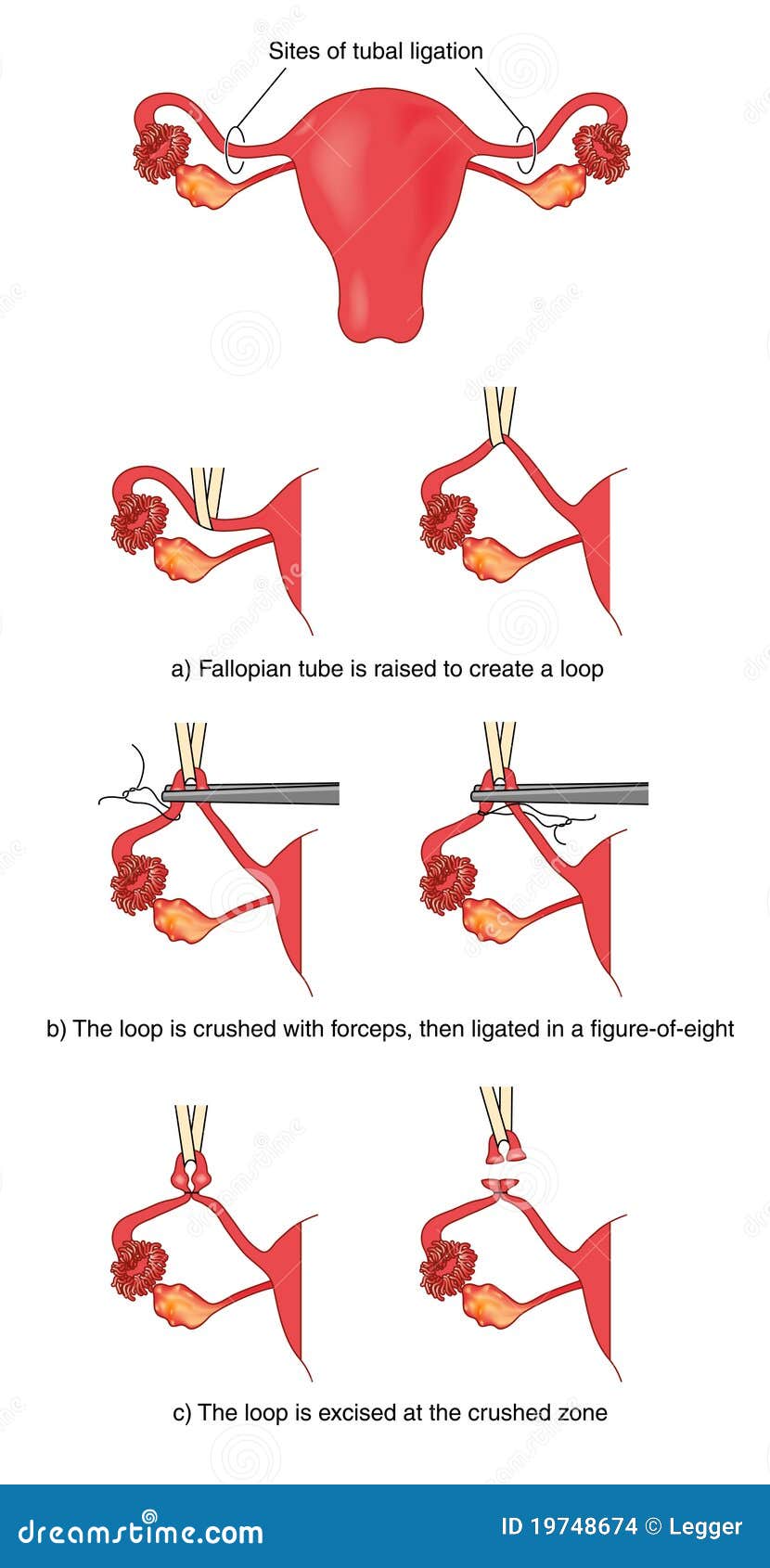
Immediate Post-Operative Period
After the procedure, you’ll be moved to a recovery area where medical staff will monitor you as you wake up from anesthesia. Most women can go home within a few hours of the surgery. If you’ve had the procedure done following childbirth or a C-section, you’ll recover in the hospital as part of your postpartum care.
Recovery Timeline
The typical recovery period for tubal ligation is 1-3 weeks. However, this can vary depending on individual factors and whether the procedure was performed in conjunction with childbirth. Here’s a general timeline:
- First 24 hours: Rest at home, arrange for someone to stay with you
- First week: Gradually increase activity, avoid heavy lifting
- 1-2 weeks: Most women can return to work and normal activities
- 3-4 weeks: Full recovery for most women
If you’ve had a tubal ligation following a C-section or vaginal delivery, your recovery may take longer as you’ll be healing from childbirth as well.
Managing Post-Operative Symptoms
It’s normal to experience some discomfort after the procedure. You may encounter:

- Abdominal pain or cramping
- Shoulder pain (from the gas used to inflate your abdomen)
- Fatigue
- Light vaginal bleeding
Your doctor will provide instructions for pain management, which may include over-the-counter pain relievers or prescription medications. It’s important to follow these guidelines and contact your healthcare provider if you experience severe pain, heavy bleeding, or signs of infection such as fever or unusual discharge.
Long-Term Considerations After Tubal Ligation
While tubal ligation provides permanent contraception, it’s important to understand its long-term implications:
Menstrual Cycles and Hormones
Tubal ligation does not affect your hormonal balance or menstrual cycles. You will continue to ovulate and have regular periods. Some women report changes in their menstrual patterns after tubal ligation, but research suggests these changes are more likely due to stopping hormonal birth control rather than the tubal ligation itself.
Sexual Function
Tubal ligation should not affect your sexual function or libido. Many women report increased sexual satisfaction due to the reduced anxiety about unintended pregnancy. However, it’s crucial to remember that tubal ligation does not protect against sexually transmitted infections, so safe sex practices are still important.

Potential for Regret
While most women who choose tubal ligation are satisfied with their decision, some may experience regret, especially if their life circumstances change. It’s estimated that about 20% of women who have had tubal ligation before age 30 express regret within 14 years after the procedure. This underscores the importance of careful consideration and counseling before deciding on this permanent form of contraception.
Reversal Possibilities
While tubal ligation is considered permanent, reversal procedures do exist. However, these are complex surgeries with no guarantee of success. The success rates for achieving pregnancy after reversal range from 40% to 85%, depending on various factors including the type of tubal ligation performed and the woman’s age. Additionally, reversal procedures are often not covered by insurance and can be quite expensive.
Alternatives to Tubal Ligation: Exploring Other Options
While tubal ligation is an effective and permanent form of birth control, it’s not the only option available. Before deciding on tubal ligation, it’s worth considering other contraceptive methods that may suit your needs:
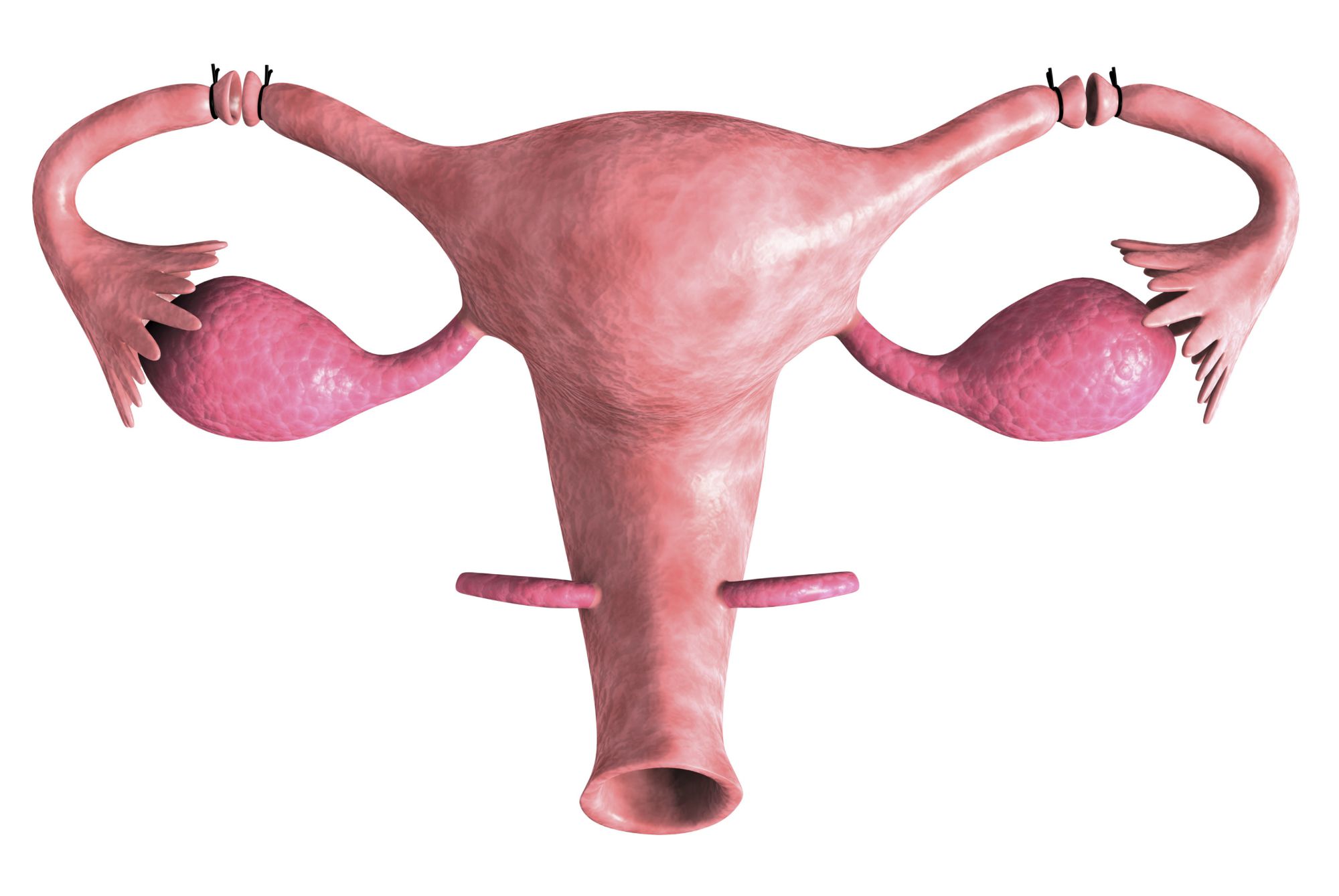
Long-Acting Reversible Contraceptives (LARCs)
LARCs are highly effective methods that don’t require daily attention:
- Intrauterine Devices (IUDs): Small T-shaped devices inserted into the uterus. They can be hormonal or non-hormonal and last for 3-10 years, depending on the type.
- Contraceptive Implant: A small rod inserted under the skin of the upper arm, releasing hormones to prevent pregnancy for up to 3 years.
Hormonal Methods
These methods use hormones to prevent pregnancy:
- Birth Control Pills: Oral contraceptives taken daily.
- Contraceptive Patch: A patch worn on the skin, changed weekly.
- Vaginal Ring: A flexible ring inserted into the vagina, replaced monthly.
- Contraceptive Injection: A shot given every 3 months.
Barrier Methods
These methods physically prevent sperm from reaching the egg:
- Condoms: Available for both males and females, also provide protection against STIs.
- Diaphragm or Cervical Cap: Inserted into the vagina before intercourse.
Male Sterilization
Vasectomy: A surgical procedure for men that blocks sperm from leaving the body. It’s generally simpler and has a quicker recovery time than tubal ligation.

Each of these methods has its own set of advantages, disadvantages, and effectiveness rates. It’s important to discuss these options with your healthcare provider to find the method that best suits your individual needs, health status, and lifestyle.
Making the Decision: Is Tubal Ligation Right for You?
Deciding to undergo tubal ligation is a significant life choice that requires careful consideration. Here are some key factors to contemplate:
Certainty About Future Childbearing
Are you absolutely certain that you don’t want to have any (more) children? Consider potential life changes such as a new relationship, loss of a child, or improved financial situation that might alter your perspective on having children in the future.
Age and Life Stage
Younger women are more likely to experience regret after tubal ligation. If you’re in your 20s or early 30s, you might want to consider reversible long-acting contraceptives as an alternative.
Relationship Status
If you’re in a committed relationship, it’s important to discuss this decision with your partner. Some couples may prefer that the male partner undergoes a vasectomy instead, as it’s generally a simpler procedure with quicker recovery.
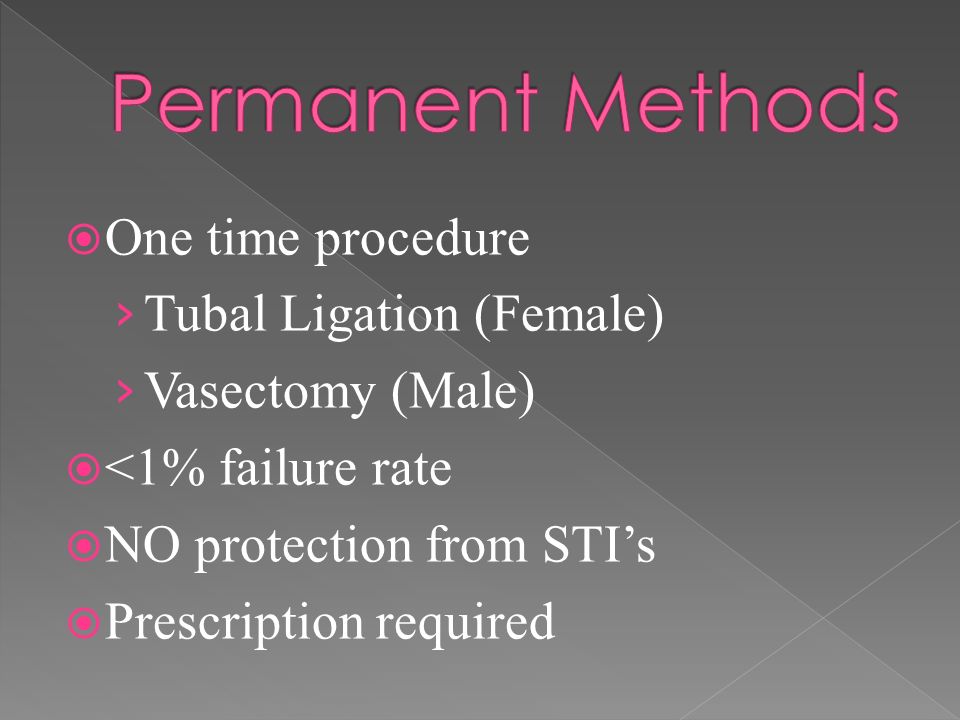
Health Considerations
Do you have any health conditions that make pregnancy risky? Or conversely, do you have any conditions that might increase the risks of the tubal ligation procedure itself? Discuss these factors with your healthcare provider.
Psychological Readiness
Are you emotionally prepared for the permanent nature of this decision? Some women report a sense of loss or grief after the procedure, even if they were sure about their decision beforehand.
Financial Aspects
While tubal ligation is often covered by insurance, it’s worth checking your coverage. Also, consider the long-term financial implications of your family planning decisions.
Counseling and Informed Consent
Many healthcare providers require counseling before performing tubal ligation, especially for younger women or those without children. This counseling ensures that you fully understand the permanence of the procedure and have considered all your options.
Remember, there’s no rush to make this decision. Take your time, gather information, and have thorough discussions with your healthcare provider and loved ones. The goal is to make a decision that you’ll feel comfortable with in the long term.

Side Effect, Recovery & Why It’s Done
What a tubal ligation procedure is and why you might need one
- Home
- OB/GYN Knowledge Center
- What is a Tubal Ligation Procedure?
Tubal ligation, which is commonly referred to as “tubal sterilization” or “having your tubes tied,” is a permanent form of birth control. Women who no longer wish to have children may opt for the procedure. It’s important to note that though it’s extremely effective at preventing pregnancy, it doesn’t protect women from sexually transmitted infections (STIs).
The procedure is fairly common and usually covered by health insurance. It is estimated that 700,000 tubal ligation procedures occur each year in the U.S.
Overview of tubal ligation
Each month, an egg travels from an ovary down the attached fallopian tube. If a woman has unprotected sex, the sperm travels up the tube and fertilization may occur. Tubal ligation prevents fertilization from occurring.
If a woman has unprotected sex, the sperm travels up the tube and fertilization may occur. Tubal ligation prevents fertilization from occurring.
During a tubal ligation, the OB/GYN cuts, clips or burns the fallopian tubes. The physician can also completely remove the tube. This prevents sperm from traveling up the tubes and an egg from traveling down. Women who have a tubal ligation still get regular periods.
It is usually an outpatient procedure, though it can be performed following a C-section or after childbirth. Tubal ligation is permanent; reversing the procedure is difficult and may not result in a successful pregnancy.
Reasons for getting a tubal ligation procedure
There are many different reasons why a woman might choose to get a tubal ligation. You may want to have sex without worrying about getting pregnant, you might not want to deal with the side effects of hormonal birth control or getting pregnant might put your health at risk.
Some women don’t want to pass on a genetic condition, while other women (along with their partner) might decide that their family is complete and they are done having children. It’s a permanent decision that you must make for yourself.
It’s a permanent decision that you must make for yourself.
Different types of tubal ligation
There are several different types of tubal ligation.
Bipolar coagulation
During this procedure, an electrical current is applied to the fallopian tubes to cauterize different sections. These sections are typically 2-3 centimeters long.
Fimbriectomy
The portion of the fallopian tube closest to the ovary is cut and removed.
Monopolar coagulation
Electric current is used to cauterize the fallopian tube together. The current is then applied further to damage the remainder of the tubes.
Tubal ring
The fallopian tubes are doubled over and a silicone band is placed over the doubled portion.
Irving procedure
Two sutures are placed on the fallopian tubes and then the section between the tubes is removed. The ends of the tubes are then attached to the back of the uterus and connective tissues.
Tubal clip
Similar to the tubal ring, a permanent clip is applied and fastened to the doubled portion of the fallopian tubes.
Pomeroy tubal ligation
A portion of the tube is doubled up and a suture is placed in the tubes. The ends are then cauterized with an electrical current.
What to expect during tubal ligation
During the tubal ligation procedure, you will be placed under anesthesia so you don’t experience any pain. An anesthesiologist will monitor the anesthesia to ensure your comfort.
Outpatient tubal ligation requires that a small amount of gas is inserted to inflate the abdomen. A laparoscope is then inserted into the abdomen and the procedure is performed. Two other small incisions might be made for medical instruments to go through the abdominal wall. The tubal ligation will then be performed.
Possible risks and side effects of tubal ligation
Though tubal ligation is highly successful for most women, it does have some risks. Fewer than 1 out of every 100 women might get pregnant after the procedure. Younger women have a greater chance of the procedure not working than older women. Women who do get pregnant after having a tubal ligation might experience an ectopic pregnancy.
Women who do get pregnant after having a tubal ligation might experience an ectopic pregnancy.
Other risks of tubal ligation include an adverse reaction to the anesthesia, infection, abdominal or pelvic pain that doesn’t go away after healing or damage to the bladder, bowel, or major blood vessels. Having diabetes, being obese, or having a history of abdominal surgery puts you at risk of complications.
Tubal ligation recovery
After the procedure, the gas will be removed and you will be woken from anesthesia. Those who get the procedure performed typically go home within a few hours. Those who opt to get a tubal ligation following childbirth or a C-section recover in the hospital. No extra time is normally needed in the hospital following the procedure.
Tubal ligation recovery typically takes 1-3 weeks after the procedure. It may take longer following a C-section or childbirth. You may experience some pain at the incision site along with abdominal pain, dizziness, fatigue, shoulder pain, or gas. These side effects should go away with time.
These side effects should go away with time.
You can usually bathe after 48 hours, taking care not to rub or pull at the incision site. Take it easy and avoid heavy lifting, exercise, and sex until your doctor advises you to resume normal activities.
If healing seems to be taking too long or you experience a fever over 100.4 degrees, fainting, bleeding at the incision site, severe pain, or discharge from the incision site, talk with your OB/GYN immediately.
Is a tubal ligation right for you? Talk with your OB/GYN doctor
If you think that tubal ligation might be the right choice for you, talk with your OB/GYN today. Your doctor will be able to perform an exam and determine if the procedure is right for you and explain any additional concerns you may have.
Women who live in North Central Florida should contact the experienced OB/GYN professionals at All About Women for more information about tubal ligation.
Should I Get My Tubes Tied? 7 Things You Should Know
When it comes to birth control these days, women have a lot of options. If you’re done having children or have made the decision you don’t want them at all, you may have contemplated getting your tubes tied.
If you’re done having children or have made the decision you don’t want them at all, you may have contemplated getting your tubes tied.
The procedure to get your “tubes tied” is actually called a “tubal ligation” or tubal sterilization, in medical terms. A tubal ligation is a female sterilization procedure where a woman’s fallopian tubes are cut or blocked to prevent eggs released by your ovaries from reaching your uterus and being fertilized. Tubal ligations are performed surgically. They can be done through small cuts in the belly button or abdomen, or even vaginally, within a few days after vaginal birth or even at the same time as a C-Section.
While tubal ligation is the most common form of birth control used by women, it isn’t well understood.
“If you’re considering having it done, it’s important to understand the ins and outs of it before making a decision,” said Pooja Shah, MD, an OBGYN at Banner Health Center in Chandler, AZ. “Tubal ligations should actually be a part of a larger conversation you have with your doctor when considering contraception. They can help guide you, so you make the right decision for you and your body.”
They can help guide you, so you make the right decision for you and your body.”
If you are considering getting your tubes tied, Dr. Shah shared seven things you should know before deciding if this type of surgery is right for you.
1. Your tubes aren’t actually tied
While your doctor will refer to it as a tubal ligation or sterilization, you’ve probably only heard it referred to as “getting your tubes tied.” The thing is, it’s not as simple as tying your fallopian tubes into a nice little bow—in fact, it’s nothing like this at all.
With a tubal ligation, either part or all of the tubes might be cut, blocked or removed. The most common method is surgical and done laparoscopically in an outpatient procedure. If performed vaginally, a doctor will go through your vagina and cervix and up into the fallopian tubes.
2. It really is permanent
This can be a real plus if you don’t plan on having any more children, but a real downer if you change your mind.
“The biggest thing people sometimes don’t realize is that this is permanent,” Dr. Shah said. “While it can sometimes be reversed with surgery, it’s not always possible and definitely does not guarantee pregnancy.”
Shah said. “While it can sometimes be reversed with surgery, it’s not always possible and definitely does not guarantee pregnancy.”
3. Age is a big factor
Because this form of permanent contraception is not meant to be reversed, you may want to wait if you are young or do not have children.
“Doctors often have their own recommendations for the youngest age to perform tubal ligation,” Dr. Shah said. “For some, it’s after 25, but for others it’s after 30.”
4. The risk of regret
Dr. Shah said the other biggest risk she sees is regret.
“At the time of your procedure, you might not have wanted children, but this can all change,” she said. “Whether you found a new partner or you are now an empty nester, there are many reasons people change their minds about having kids. If you are not sure about future plans, there are fantastic contraceptive options that are long-term, not permanent and can be reversed in the future.”
5. You’ll still get your period
Most likely you won’t see any changes to your period, which can be good or bad, if you like or dislike getting it. It also won’t affect your hormones like other forms of contraception.
It also won’t affect your hormones like other forms of contraception.
6. You may have to wait
You may be anxious to get the procedure over with but be prepared to wait. In some federally funded health insurance plans, it is mandatory to wait at least 30 days after signing a consent form to have your procedure completed.
7. A vasectomy is WAY easier
Let’s face it. When it comes to some things, men have it easier. And in the case of permanent contraception, a vasectomy is a safer and cheaper surgical procedure. Ladies, it may be time to have him snipped.
“While tubal ligation is a personal decision, engage in a conversation with your physician about your desires, doubts and questions so you are confident in your decision,” Dr. Shah said.
Schedule an appointment with a Banner Health specialist to discuss if tubal ligation is the right path for you to take to prevent pregnancy. To find a doctor, visit bannerhealth.com.
Other useful articles:
- Premenstrual Dysphoric Disorder, a Severe Form of PMS
- You Don’t Have to Suffer with Vaginal Dryness.
 Here’s What Can Help
Here’s What Can Help - Is My At-Home Pregnancy Test Accurate?
- What Is Ovarian Cancer and What Are the Symptoms?
Women’s Health
Gynecology
Laparoscopic tubal ligation – Operation cost in Ukraine
At the doctor’s office for laparoscopic intervention
Contents of the page:
- Advantages of the technique
- Indications and contraindications
- Preparation for surgery
- Operation progress
- Rehabilitation period
- Features of treatment in the clinic
Laparoscopic fallopian tube ringing to prevent pregnancy is an operation in which part of the fallopian tube is intercepted by a special ring, during which its patency is impaired, and pregnancy does not occur.
A woman refuses to get pregnant for various reasons. Each case has its own grounds for voluntary sterilization. There are also medical contraindications for pregnancy. These are severe chronic diseases in the stage of decompensation, a serious psychiatric pathology. In such cases, laparoscopic placement of rings on the fallopian tubes is used to prevent pregnancy.
There are also medical contraindications for pregnancy. These are severe chronic diseases in the stage of decompensation, a serious psychiatric pathology. In such cases, laparoscopic placement of rings on the fallopian tubes is used to prevent pregnancy.
This sterilization method compares favorably with other sterilization methods due to its reliability and reversibility. The use of temporary sterilization has undeniable advantages over permanent sterilization. The life situation can change, and a woman may want to give birth. That is why this technique is used in the Uzhgorod clinic of Bilyak.
Alternative methods have their drawbacks. Electrocoagulation of the tubes cannot guarantee complete occlusion of the lumen. The imposition of clips is also not reliable, since the clip can be damaged, as a result of which the patency of the fallopian tube is restored.
Crossing the tubes, crushing their ampullary section is an irreversible action, does not allow the resumption of the ability to give birth. The invasiveness of the intervention can provoke an adhesive process in the small pelvis.
The invasiveness of the intervention can provoke an adhesive process in the small pelvis.
Contacting the Bilyak clinic guarantees an individual approach and professional assistance to women who decide to give up children. Voluntarily or involuntarily, it doesn’t matter. The method used does not affect the state of health and leaves the possibility of pregnancy in the future.
Any questions regarding the prevention of pregnancy can be asked to a specialist of the Bilyak clinic using the service on the website.
Benefits of the
technique First of all, it should be said that surgical sterilization provides the highest guarantee of contraception compared to other methods. It removes the functionality of the fallopian tube, which is the path for the egg that has left the ovary. It is here that fertilization occurs, and then the embryo passes into the uterine cavity. Tubal ligation completely eliminates the possibility of germ cells meeting and fertilization.
And yet, in some cases, when it comes to unsuccessful surgical interventions, fertilization does occur. And then the risk of developing an ectopic pregnancy is high. However, if the method of sterilization by applying rings is chosen, this danger is reduced to zero. It gives the lowest risk of complications, moreover, is reversible.
Fallopian tube rings have several advantages:
- Maximum protection against unwanted pregnancy.
- No effect on the state of the reproductive organs, female libido, hormonal levels.
- Reducing the risk of inflammation of the appendages in the future – the path of infection into them is blocked.
- Absence of injury – the tissues of the fallopian tubes are not damaged in any way, they are simply pulled by the ring.
- Preservation of ovulation and the menstrual cycle.
- Absence of complications and side effects.
- Reversibility – the rings can be removed if desired, and the patency of the pipes is restored.

Many women choose to have this operation during a caesarean section. If this is not possible, laparoscopy is used. This technique compares favorably with alternative options:
- Minimum time investment.
- Absence of injury to muscle tissue and skin.
- Reduced risk of complications.
- Minimal blood loss.
- Quick recovery.
- Pronounced aesthetic effect.
Since laparoscopy does not require dissection of the muscles, the woman quickly comes into shape after it. And even if in the future she wants to reverse the consequences of the operation, remove the rings and become pregnant, there will be no obstacles to this. After all, the muscles of the abdominal wall are not injured, which means that she has every chance to endure and give birth to a child.
Indications and contraindications
Laparoscopic tubal ringing, if medically necessary, is performed in the following cases:
- A woman over 35 does not want to become pregnant again and she already has at least one child.

- There are inflammatory processes in the pelvic organs, in which pregnancy is undesirable.
- Conditions were diagnosed in which pregnancy and childbirth pose a danger to the life of the patient – decompensated diabetes mellitus, severe pathologies of the heart, kidneys, lungs, malignant tumors.
- Serious genetic anomalies that are inherited.
The main indicator for tubal ligation is the desire and consent of the patient herself. But unfortunately, it is not always possible to carry out this operation. Contraindications to the imposition of rings are:
- Severe obesity.
- Inflammatory processes in the small pelvis.
- Started adhesive process.
- STD in the active phase.
- Poor blood clotting.
- Umbilical hernia.
- Tumors of the genitals or intestines.
In any case, the decision to operate is made by the doctor after studying the patient’s history and carefully examining her.
Typical placement of trocars for placing rings on the fallopian tubes
Preparing for surgery
If a woman has made a conscious decision to abandon pregnancy (permanently or temporarily), laparoscopic sterilization is performed. This is a surgical intervention, so a number of clinical examinations are to be performed. The list of studies is small, you can go through them during the day. The list includes:
- clinical and biochemical blood tests;
- urinalysis;
- tests for blood clotting, HIV and other viral infections;
- cytological smear;
- detailed interview and examination by a gynecologist;
- Ultrasound of the pelvic organs, abdominal cavity and retroperitoneal space.
The data obtained helps to plan the upcoming laparoscopic application of rings on the fallopian tubes.
Our doctors undergo regular training in clinics in the US and developed European countries. Modern equipment and the experience of surgeons make it possible to perform the intervention through three punctures in the abdominal cavity. But, nevertheless, this operation is performed under general anesthesia. Therefore, bowel preparation is required: hunger from the evening before the intervention, a cleansing enema before the procedure itself. On the day of the operation itself, it is also forbidden to eat and drink.
But, nevertheless, this operation is performed under general anesthesia. Therefore, bowel preparation is required: hunger from the evening before the intervention, a cleansing enema before the procedure itself. On the day of the operation itself, it is also forbidden to eat and drink.
View of the fallopian tube ring (enlargement)
Procedure
Laparoscopic pregnancy prevention requires three punctures of the anterior abdominal wall, 10 mm and 5 mm in diameter.
A laparoscope is inserted in the area around the umbilicus. With its help, the surgeon examines the accessible areas of the abdominal cavity and small pelvis, and other trocars are installed under visual control.
Access to the fallopian tubes is provided, their middle section is displayed in the field of view. Then an applicator with a latex ring is inserted into the abdominal cavity.
The middle part of the fallopian tube is brought into the lumen of the applicator and a ring is put on it. As a result, a loop is formed, which the ring fixes. Upon completion of the manipulation, the pipe has the same appearance as in the figure below.
As a result, a loop is formed, which the ring fixes. Upon completion of the manipulation, the pipe has the same appearance as in the figure below.
View of the fallopian tube after application of the anti-pregnancy ring
The same procedure is performed on the second fallopian tube. The light is completely covered. The ovary is not affected, the intervention does not affect the woman’s health.
After the rings have been placed, the trocars are removed. The punctures are either closed with adhesive bandages, or several stitches are applied to them. The procedure is completely bloodless and takes about 20 minutes.
If pregnancy becomes desired again, the ring is dissected laparoscopically and patency is restored, temporary sterilization is eliminated.
Rehabilitation period
Recovery after the operation is quite easy. The patient is allowed to get out of bed on the same day, and discharge is carried out after 1-2 days. After that, for 2 weeks you need to follow the precautions:
- Replace bathing in the shower.

- Eliminate physical activity completely.
- Apply special complexes to prevent swelling and bleeding.
- Refrain from sexual activity.
- Eat a healthy diet.
In general, the majority of patients easily endure the operation and soon return to their usual way of life. The imposition of rings on the pipes does not affect the woman’s sexual desire and the ability to have fun. Also, this intervention does not cancel the possibility of motherhood in the future. And here there are two options. The first is to perform a laparoscopy again and remove the rings. The second is IVF. The patient herself chooses which option is more preferable for her.
Peculiarities of treatment in the clinic
Each case of visiting the clinic is individual. A harmonious approach to the treatment of any woman is a feature of the treatment process in our clinic. Our specialists respect the decision of the patient and do not dissuade from the operation.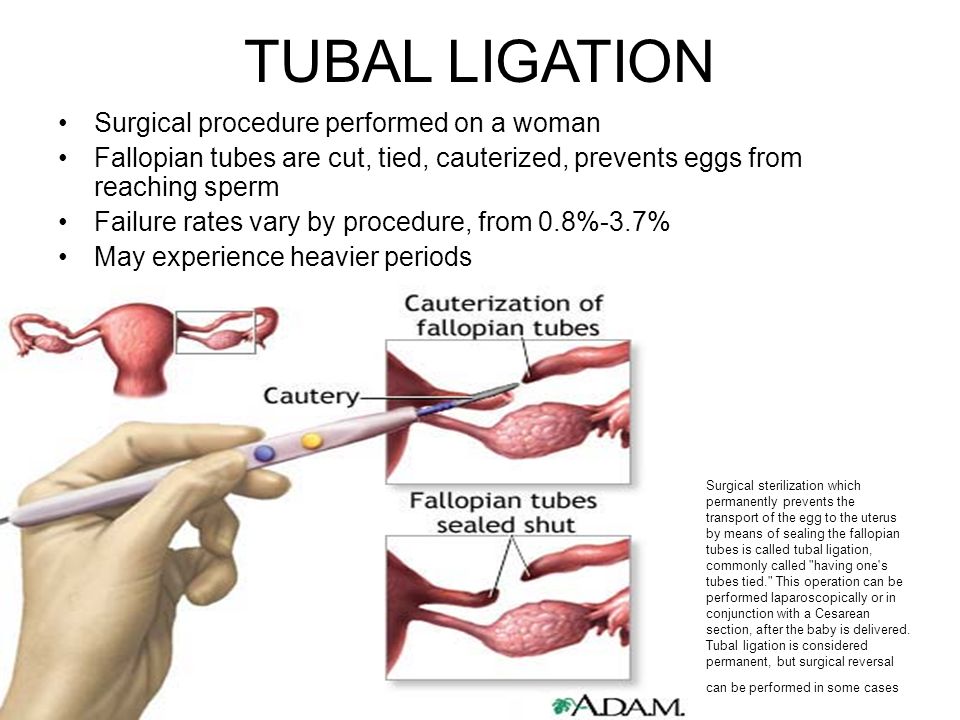 Moreover, the method of female sterilization offered in the Bilyak clinic does not cancel the possibility of motherhood in the future.
Moreover, the method of female sterilization offered in the Bilyak clinic does not cancel the possibility of motherhood in the future.
The special treatment of the staff is noticeable from the moment they ask for help. An individual nursing post is organized for each patient. Health is monitored by a qualified and experienced doctor. During her stay in the clinic, the woman’s condition is carefully monitored in order to exclude possible complications and immediately take measures in case of sudden bleeding, rupture, etc. But do not worry – such cases are rather an exception, because the sterilization method used here does not give complications.
The menu is compiled taking into account the individual characteristics of the patient’s body
The menu is compiled taking into account the individual characteristics of the patient’s body
The room is separate. Equipped in accordance with the standards adopted in the world’s leading clinics. This contributes to a quick recovery and improves the psychological mood of the patient – she feels more like in a hotel than in a hospital.
Special attention is paid to nutrition in the Bilyak clinic. The menu is compiled individually, taking into account the characteristics of the body of each patient. The composition of the dishes includes only organic products.
Ozone therapy is another progressive method used by Bilyak clinic specialists. Well-established schemes of this physiotherapeutic method of treatment contribute to the rapid restoration of strength and health after laparoscopic imposition of rings on the fallopian tubes.
Self-catering and movement is allowed after a few hours after the end of the procedure. An extract is possible already on the day of the operation, sometimes on the next. Thanks to the professionalism of the surgeons and the modern equipment of the clinic, the recovery period is not required! A woman only needs to follow the simple recommendations described above.
| Service name | Vartist, UAH |
|---|---|
| Laparoscopic tubal rings to prevent pregnancy | 30000 |
Price includes full patient care during the standard period of stay in the clinic, namely:
Please note! In other clinics of Ukraine, the above is not included in the price of the operation, but is paid additionally, and therefore the cost of surgery increases significantly. Even dressings, injections, enemas, etc. are included in the surcharge. |
Frequently Asked Questions
How much does Laparoscopic tubal ringing to prevent pregnancy cost in Bilyak Clinic?
Laparoscopic imposition of rings on the fallopian tubes in order to prevent pregnancy in the Bilyak Clinic costs 30,000 UAH.
What is included in the cost of the operation?
The cost of the operation at the Bilyak Clinic includes the full provision of the patient, namely:
– surgical and medical support
– food and accommodation
– 24-hour supervision of medical personnel
– dressings and all nursing procedures
Who performs operations and treats diseases in the Bilyak Clinic?
Operations in the Clinic of Bilyak are carried out by Ph. D.0003
D.0003
Tubal ligation in Kyiv – private clinic Oberig. Tubal ligation
Laparoscopic tubal contraceptive interventions and many others
Tubal ligation is considered the most reliable method of contraception. That is why such manipulation is suitable only for the category of patients who know for sure that they will not give birth anymore in the future. Most often, this procedure is irreversible. According to statistics, the restoration of the paths after ligation occurs in only 5 women out of 1000.
The main function of such an organ is the connection of the ovaries with the uterus, and it is there that the fertilization of the egg takes place. And with tubal ligation, fertilization in the uterus does not occur, and if we take into account the low cost of the procedure, it can become an excellent 100% contraceptive.
Indications for surgery
Most often, this operation is carried out due to the personal initiative of the patient. They also tie the tubes according to the following indications:
- having two or more children;
- medical contraindications for pregnancy and childbirth;
- severe genetic inheritance or infectious disease that can be transmitted to the fetus;
- over 35 years of age.

A prerequisite before the ligation is a complete examination of the patient, this includes ultrasound of the pelvic organs, blood and urine tests, as well as blood for sexually transmitted infections. The schedule is selected individually, most often at the end of menstruation or 6 weeks after childbirth.
Contraindications for the procedure
The main contraindications for tubal ligation are most often:
- infectious inflammation in the pelvis;
- the presence of tumors;
- diabetes mellitus;
- adhesions;
- violation of blood clotting processes.
As soon as these causes are eliminated, the doctor can decide on the manipulation.
Many people ask the question “why to tie the fallopian tubes”, most often the procedure can be done if the woman does not plan to become pregnant. Therefore, more often, patients who do not want to have children specify at what age (more precisely, at what year of life) it is safe to tie the fallopian tubes and what conditions are needed for this, and most importantly, what are the consequences of the Laparoscopy procedure. So remember, if a woman has her uterine tubes tied, she can no longer have children.
So remember, if a woman has her uterine tubes tied, she can no longer have children.
Why is tubal ligation dangerous for a woman?
Bandaging is actually one of the few methods of contraception that does not affect a woman’s hormonal status. Similarly, this manipulation has no effect on general health or libido. In addition, the advantages of this type of contraception are a 100% guarantee, and a decrease in the likelihood of inflammatory processes in the appendages. But you should not forget that the operation is irreversible, the fallopian tube cannot be restored after ligation, so this is the main consequence of the operation, which you should think about in advance, since complete sterilization will occur.
Most often, such an operation is performed on an outpatient basis using special equipment – a laparoscope. Such equipment allows such manipulations without tissue incisions, but only with the help of small punctures, which significantly reduces the postoperative recovery period. Complications with properly performed manipulation, as a rule, do not arise. Sometimes they can appear in the form of a reaction to anesthesia or due to the individual characteristics of the woman.
Complications with properly performed manipulation, as a rule, do not arise. Sometimes they can appear in the form of a reaction to anesthesia or due to the individual characteristics of the woman.
Of course, immediately after the procedure, there will be a feeling of soreness in the puncture area, general weakness, pain in the lower abdomen of a pulling nature.
The body is fully restored after 14 days from the moment of surgery. Further, she is recommended to visit a gynecologist annually for regular monitoring of the state of the body.
If you decide to ligate the fallopian tubes, you need to seek help from the Department of Gynecology. In order for the operation to be successful and without complications, it is best to entrust the care of your health to the high professionals of the Oberig clinic. Our gynecology department has everything to not only weigh all the pros and cons (complications) of a future operation for a woman, but also to ligate female fallopian tubes using laparoscopy under sterile conditions and at the most reasonable price in Ukraine.

 Here’s What Can Help
Here’s What Can Help



